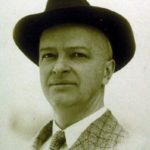Most modern readers would consider the mid-1800s a fairly rough and rugged period, inhabited by correspondingly rough and rugged individuals. However, changes in the treatment of insanity during this period point to the idea that people in the middle 1800s believed they had declined from the vigor of their ancestors.
When Dr. Benjamin Rush began treating the insane during the late 1700s, most of his treatments were aimed at depleting patients. Because of the vigorous nature of American society at the time, physicians believed that men and women tended to be out of balance on the side of too much “excitement” in their bodies.
Excitement irritated blood vessels and resulted in inflammation, fevers and breathing difficulties that could only be relieved by the intense bleeding and purging protocols that Rush practiced all his professional life. In contrast, people of the mid-1800s had become more lethargic, weak, and nervous. Treatments for the insane tended toward tonics, physical exercise, and regimented days full of activity to invigorate the patient.
Even though alienists’ views on why insanity occurred and how it affected the body changed over time, they still knew too little about the causes of insanity to do much more than treat its symptoms. Rush bled and purged his manic patients, while later alienists gave them opium and morphine to calm them. The emphasis on treating symptoms may be a reason for the multitude of techniques alienists used–they simply experimented until they found something that seemed to work.








